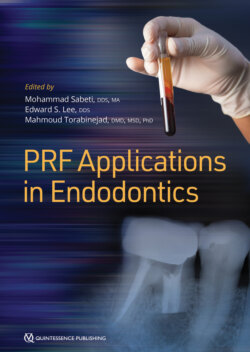Читать книгу PRF Applications in Endodontics - Mahmoud Torabinejad - Страница 7
Foreword
ОглавлениеThe use of platelet-rich fibrin (PRF) has seen a rapid increase over the past decade, owing to its ability to rapidly release autologous growth factors harvested quite easily from peripheral blood. While original case studies dating back nearly two decades focused primarily on its use in medicine for the treatment of hard-to-heal wound ulcers, it is now well known that its inclusion of high concentrations of platelets and leukocytes has served several benefits in dentistry. Specifically, platelets are largely responsible for the release of various regenerative growth factors favoring wound healing, whereas leukocytes (white blood cells) participate in host defense against incoming pathogens. The ability to concentrate both cell types found within PRF has shown pronounced benefits in the oral cavity, an area particularly concentrated with various oral bacteria.
Over the years, several research articles focused on the use of PRF for multiple applications in regenerative dentistry; more recently, publications have begun to emerge dealing specifically with its use in endodontics. I have the great pleasure to announce the launch of this new book, PRF Applications in Endodontics, which addresses this topic in extensive detail.
The book begins by providing background knowledge on various cell types found in regenerative medicine with particular focus on stem cells. Thereafter, the book rapidly enters into a variety of chapters dedicated to PRF with a brief history regarding its scientific background, including growth factors, armamentarium, and protocols utilized to fabricate PRF. The discussion then transitions to nonsurgical applications in regenerative endodontics, as well as its use in dentistry, particularly for the formation of a bone grafting material complex including bone grafting particles and autologous PRF (aka “sticky bone”). Its use as an alternative to bone grafts and other biomaterials is further discussed in later chapters dealing with endodontic surgery. These include various endodontic procedures indicated following common human “accidents” (accidental tooth loss and replantation, for instance), for improvements in furcation-involved teeth as a result of iatrogenic procedures, for root-end resection procedures, and for the management of surgical cysts.
This textbook is for both the beginner as well as the advanced endodontist and practicing dentist working in the field of endodontics wishing to further improve their practice by adopting some of the latest regenerative protocols. It is certainly a first of its kind and a must-read in the field of endodontics, highlighting the benefits of autologous blood concentrates specifically dedicated to endodontic procedures.
Colleagues will certainly enjoy this read, and it will undoubtedly open many avenues of future research on the topic!
Richard J. Miron, DDS, MSc, PhD
Group Leader, The Miron Research Lab
Lead Educator, Advanced PRF Education
Venice, Florida
